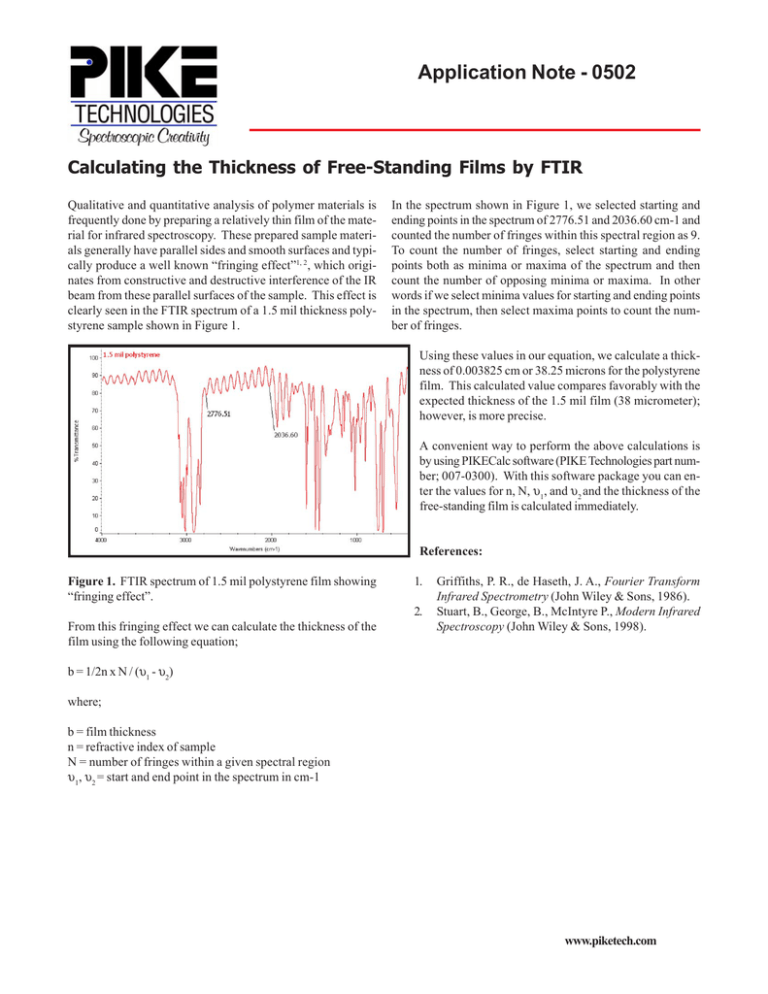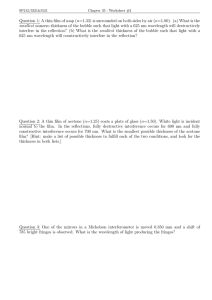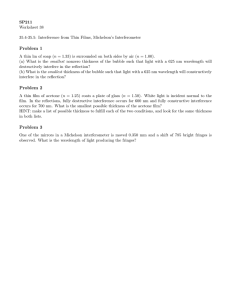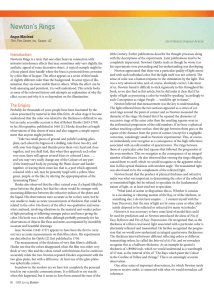Calculating Thickness of Free-Standing Film by FTIR
advertisement

Application Note - 0502 Calculating the Thickness of Free-Standing Films by FTIR Qualitative and quantitative analysis of polymer materials is frequently done by preparing a relatively thin film of the material for infrared spectroscopy. These prepared sample materials generally have parallel sides and smooth surfaces and typically produce a well known “fringing effect”1, 2, which originates from constructive and destructive interference of the IR beam from these parallel surfaces of the sample. This effect is clearly seen in the FTIR spectrum of a 1.5 mil thickness polystyrene sample shown in Figure 1. In the spectrum shown in Figure 1, we selected starting and ending points in the spectrum of 2776.51 and 2036.60 cm-1 and counted the number of fringes within this spectral region as 9. To count the number of fringes, select starting and ending points both as minima or maxima of the spectrum and then count the number of opposing minima or maxima. In other words if we select minima values for starting and ending points in the spectrum, then select maxima points to count the number of fringes. Using these values in our equation, we calculate a thickness of 0.003825 cm or 38.25 microns for the polystyrene film. This calculated value compares favorably with the expected thickness of the 1.5 mil film (38 micrometer); however, is more precise. A convenient way to perform the above calculations is by using PIKECalc software (PIKE Technologies part number; 007-0300). With this software package you can enter the values for n, N, υ1, and υ2 and the thickness of the free-standing film is calculated immediately. References: Figure 1. FTIR spectrum of 1.5 mil polystyrene film showing “fringing effect”. 1. 2. From this fringing effect we can calculate the thickness of the film using the following equation; Griffiths, P. R., de Haseth, J. A., Fourier Transform Infrared Spectrometry (John Wiley & Sons, 1986). Stuart, B., George, B., McIntyre P., Modern Infrared Spectroscopy (John Wiley & Sons, 1998). b = 1/2n x N / (υ1 - υ2) where; b = film thickness n = refractive index of sample N = number of fringes within a given spectral region υ1, υ2 = start and end point in the spectrum in cm-1 www.piketech.com




